This post is intended to be a follow up to our post last month about the difference between Tennis Elbow and Golfer’s Elbow. If you are experiencing pain in the elbow and are unsure of where to begin, we recommend reading that article first, and then coming back to this one.
For the purpose of this article, we will define these conditions as tendonitis (see our full article on physical therapy for tendonitis) on either sides of the elbow, usually brought about by repetitive motions and sometimes creating pain up the forearm and wrist as well.
The first consideration is that we should be past the acute phase of the injury. The acute phase is the early stage of the injury, sometimes lasting up to 2-3 weeks. Symptoms may include swelling, pain, and lack of proper function. Additionally, how long it takes to build tendon strength varies greatly based on a number of factors.
We recommend that you gauge your level of pain during this period of time. Attempt the stretches, but hold off on the strengthening activities until the acute phase is over. As with any form of rehabilitation, if your efforts end up making the problem worse, we recommend contacting a specialist, such as your doctor or physical therapist for tennis elbow treatment.
Now that we are passing the acute phase of our injury, we can try a few stretches and strengthening exercises to restore function. This will help to focus on the muscle imbalances that are causing our elbow issues. Take note of the statements below – this is why it’s important to know which one you have:
With Golfers elbow (medial epicondylitis), our wrist and finger flexors tend to be tighter, which is why it is best to stretch them while also working on strengthening the wrist and finger extensors.
With Tennis elbow (lateral epicondylitis), it is the opposite. We tend to use our wrist extensors more, meaning that we want to stretch the wrist extensors, and strengthen the wrist flexors (forearm muscles).
Below are a few exercises to try for each.
Please keep in mind that if you are going to try these exercises, if any pain or discomfort occurs, to stop immediately and consult your doctor or physical therapist. These exercises should only be attempted if pain and swelling has decreased.
Exercises to fix tennis elbow
Complete the following tennis elbow exercises 3-4 days per week for four weeks:
Wrist flexion stretch
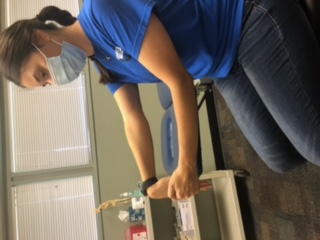
This is one of the best tennis elbow stretches out there – with your arm straight out in front of you, bend your wrist and point your fingers down towards the floor. Use your other hand to push your wrist into a further stretch until you feel a stretch in forearm. Hold this position for 20-30 seconds and repeat three times.
Wrist flexion strength exercise
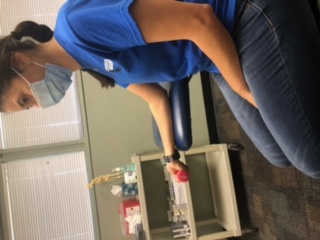
To start, grasp a 2-3 pound dumbbell and place your forearm on a table or platform. Turn your wrist over until your palm faces the ceiling.
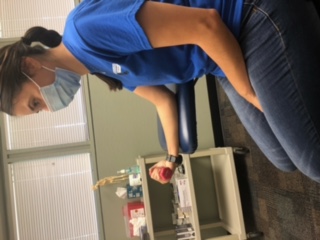
Curl your wrist up toward the ceiling, hold the contraction for a second, and lower the weight back to down. Complete 10-12 repetitions, and repeat for 3-4 sets.
Ball Squeezes
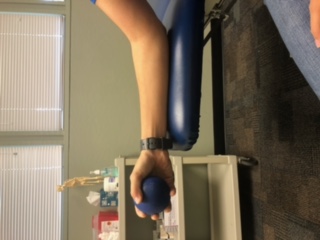
Start by grasping a rubber ball (such as a stress ball, or any other ball you have lying around the house) in your hand and place your forearm on the table as you did in the exercise above. This time, have the palm in a neutral position, facing your center line. This effectively isolates the finger flexor muscles (the ones that cause your hand to “close”). If you do not have a ball, you can also use putty for this exercise.

Squeeze the ball or putty for 5 seconds and repeat for 10-12 repetitions. Complete 3-4 sets of this exercise.
How to Get Rid of Golfer’s Elbow
Complete the following golfer’s elbow exercises 3-4 days per week for four weeks:
Wrist flexion stretch
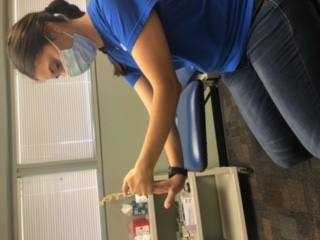
With your arm out straight in front of you, use your opposite hand to bend your wrist up with fingers pointing up toward ceiling. Using your opposite hand, pull your wrist into a further stretch until you feel a stretch in forearm. Hold this position for 20-30 seconds and repeat three times.
Wrist extension strength exercise

With your affected side’s forearm supported by a table or platform, grasp a dumbbell with your palm down and let your wrist drop down towards the floor.
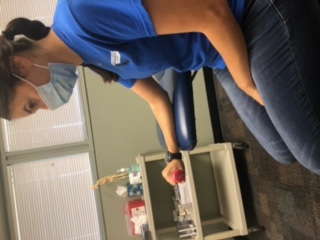
Extend your wrist up toward the ceiling, hold the contraction for a second and return to the start position. Repeat 10-12 repetitions and complete 3-4 sets before moving on.
Rubber band finger extension
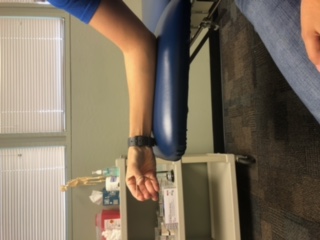
Wrap a rubber band around your fingers, and rest your forearm on the platform you used in the previous exercise. Place your wrist in a neutral position, with the palm facing your centerline.

Once in place, open your hand and extend your fingers as wide as they can go while keeping the rubber band in place. Repeat for 10-12 repetitions. Complete 3-4 sets.
Further questions and information on tennis elbow recovery and golfer’s elbow recovery
Tennis elbow and golfer’s elbow can be painful, annoying, debilitating, and can stop us from doing the activities we love. However, that doesn’t mean it has to last forever.
Complete the above exercises 3-4 days per week, preferably on non consecutive days (Monday, Wednesday, and Friday would be one example). With a basic cases of tendonitis, this usually will do the trick.
You will probably experience some soreness in the very beginning. This is normal. The trick is to differentiate between the phenomenon known as “delayed onset muscle soreness” (DOMS), and pain. If you are experiencing light soreness in the muscles (maybe they are tender to the touch), then you are OK to continue. However, if you are experiencing worsening PAIN in the joints or tendons (bad!), you may have overdone it, or you may need to get it looked at by a professional. In this case, we do not recommend you continue.
We recommend 4 weeks of the exercises. There are some exceptions to this. For instance, if the pain gets worse, we recommend to stop the activity and call your doctor or physical therapist.
This can be a tricky question, but most of the time we recommend that when your pain subsides, you are ok to return to activity. One caveat – we recommend to return to activity SLOWLY! For instance, you may want to go to the driving range and swing at a couple of golf balls before committing to 18 holes for the afternoon. If you return to activity slowly, and the pain remains gone, ramp up to your previous activity level over the course of 4 weeks.
We hope that helps! Tennis and golfer’s elbow can be extremely annoying, but their treatment just requires patience and consistency. You’ll get back to daily activity before you know it. Let us know in the comments if you have anything to add, or anything you would like us to cover next!

















